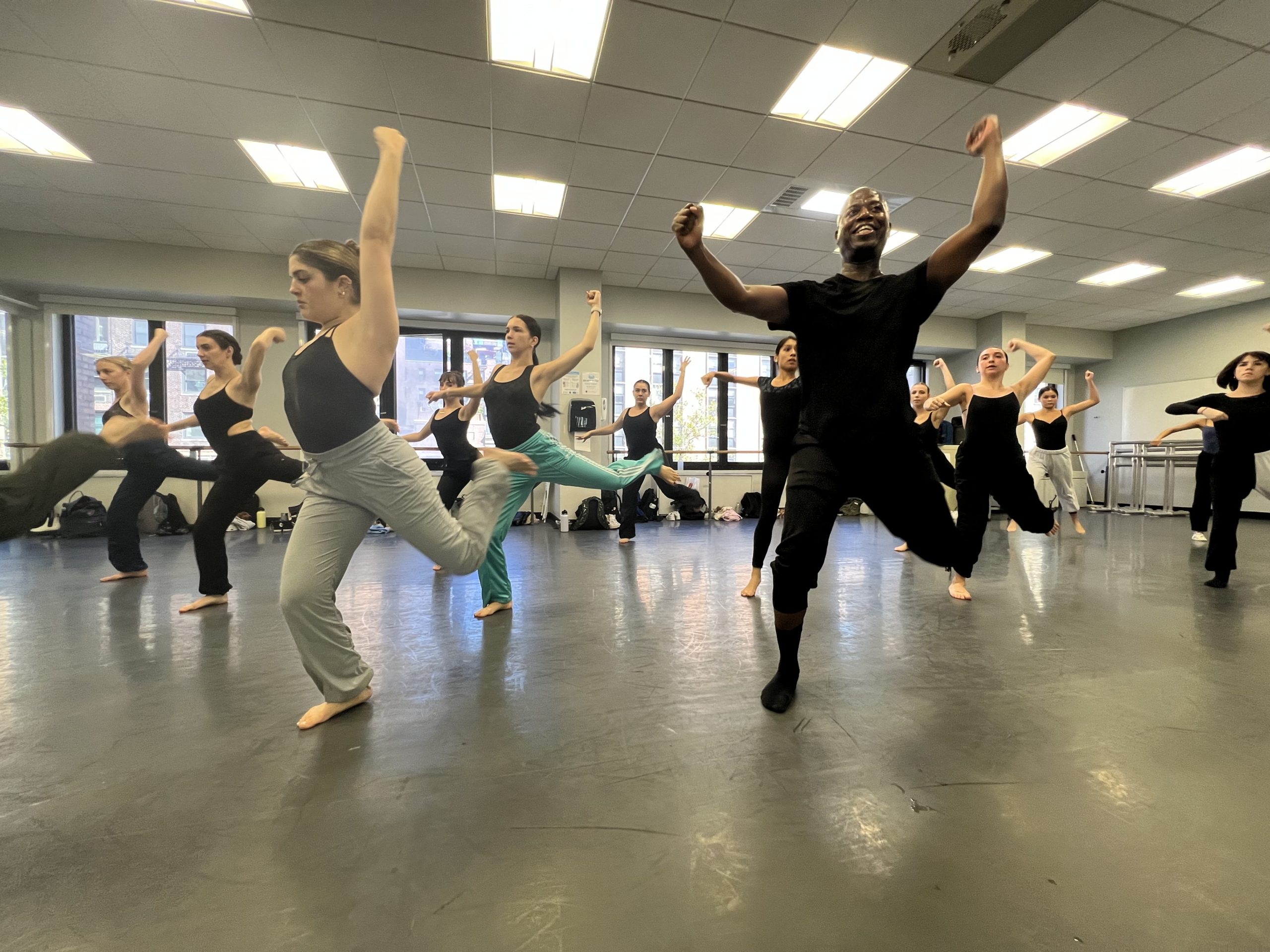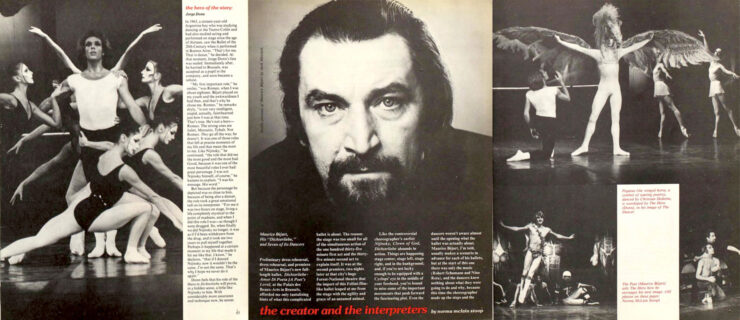How Marymount Manhattan’s Newest Required Course—Embodied Africanist Aesthetics—Is Swiftly Making an Impact on Its Dance Majors
When Marymount Manhattan College student Elias Colado saw a five-day-a-week course titled “Embodied Africanist Aesthetics” appear on his freshman spring schedule last year, he was surprised. Though he was sad not to continue with another class he’d liked in the fall, he quickly learned that Embodied Africanist Aesthetics was the program’s newest graduation requirement. “I’d never done any Africanist dance aesthetics before, so it was really new to me,” says the sophomore, a BFA dance major with a concentration in choreography. “I was totally pushed out of my comfort zone, and I loved it. Having that course first thing every morning was so motivating and helpful.” When asked if knowing about this course would have made him even more eager to attend Marymount, he agreed enthusiastically: “I think that having an African class as a requirement is very necessary for all dancers.”
Marymount Manhattan Dance Department’s Embodied Africanist Aesthetic course, which launched last year, is co-taught by a group of five faculty members; each section includes a mix of hip hop, Latin jazz and Afro-Caribbean forms, and includes live drummers, giving students a chance to learn about polyrhythms. “We really felt that as an institution, we needed to update our curriculum,” says department chair Nancy Lushington. “We were looking for ways to diversify our training, and we felt that the Africanist aesthetic needed to be as important as teaching ballet five days a week.” In an ever-changing dance world where artists are asked to be more versatile than ever, Marymount is one of the first dance programs to forge new ground, not only better preparing students for what’s to come, but showing them through practice that all dance forms hold equal weight.
Decolonizing the Department
Students entering Marymount’s Dance Department can choose between a BFA (with concentrations in ballet, modern, jazz and choreography) and a BA (with concentrations in body, science and motion; dance and media; dance studies; and teaching dance arts). When it comes to updating the program’s curriculum, Lushington sees the Embodied Africanist Aesthetics course as just the first step. “We’re trying to decolonize the form and not place ballet at the top of the ladder,” she says. For example, instead of simply taking modern, third-year students now rotate through studies in Kathak, Butoh and Flying Low techniques. “With this diversity comes a different way of looking at all the forms as equally important for dancers to know,” adds Lushington. “The age of specialization is gone. After all, New York City Ballet is doing Kyle Abraham! Dancers have to be much more versatile and much more aware.”
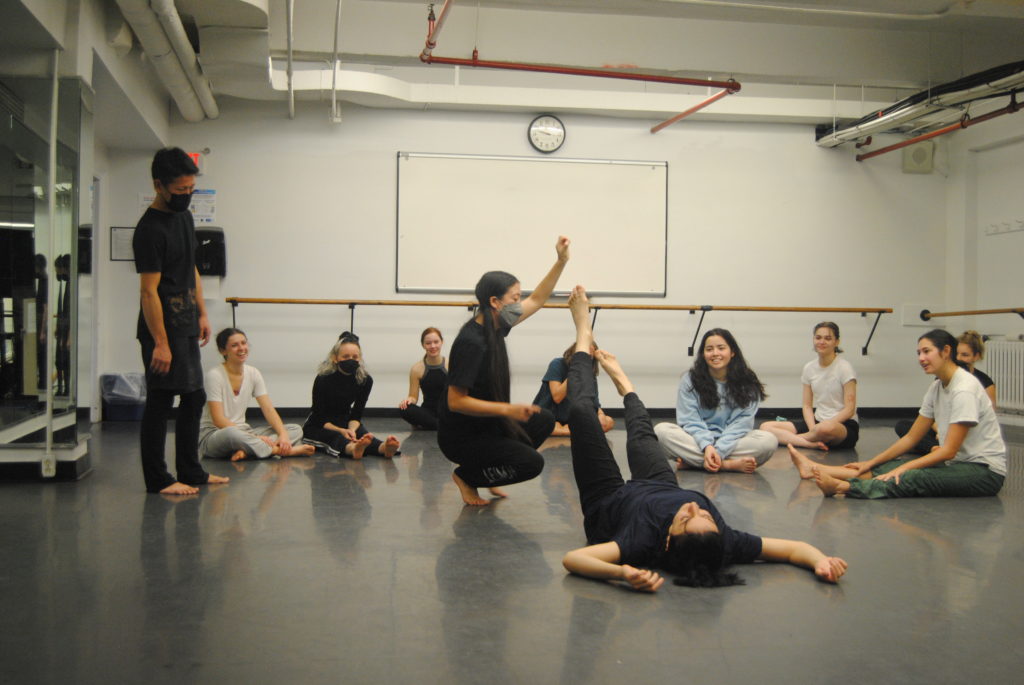
Technique Rooted in History and Culture
Each of the professors who teach within the Embodied Africanist Aesthetics course strikes a balance between practice and explanation. “In hip hop, Keenan Thomas would break down the history of how robotics and animatronics have transformed throughout the years,” remembers senior BFA dance major Sydney Worthy, who’s completing a BFA with a concentration in choreography. “He made sure what we were learning connected to pop culture and things we knew about.”
Sekou McMiller, who teaches Afro-Latin jazz, Cuban modern and Senegalese Acogny technique, roots dances in their cultural context by connecting to spirituality. “He talked about orishas (West African deities), which allowed me to harness a different part of myself as a dancer, feeling connected to a spiritual entity,” says Worthy. Similarly, Ingeborg Kolstad, a junior BA dance major with a concentration in teaching dance arts, found Angie Pittman’s Umfundalai class to have a therapeutic quality. “Unlike a ballet class, where you leave your problems at the door, she told us to process our emotions through the movement and acknowledge our surroundings and ancestors,” she says of the contemporary African dance technique. This experience has encouraged Kolstad to look into movement therapy as a possible profession.
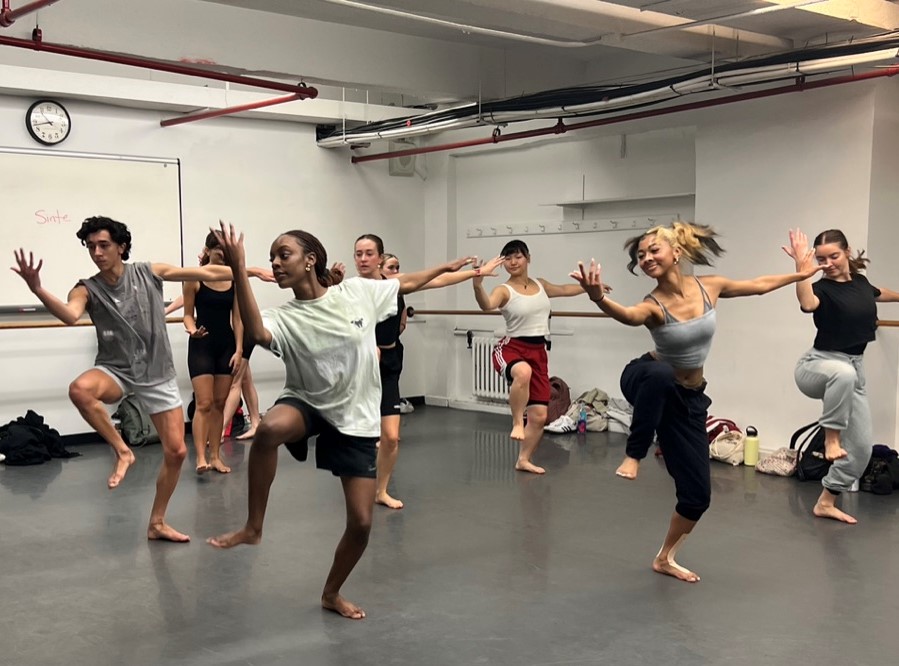
A Community-Centered Approach
For Worthy, taking Embodied Africanist Aesthetics also changed her understanding of how community and dance interact. “As a person of color, I feel like it allowed me to gain a different perspective on dance,” she says. “These classes reinforced the idea of community, and how to generate spaces as a choreographer that hold respect for all the dancers within it.”
Jazelynn Goudy, Marymount’s newest dance professor, who’s teaching hip hop, imparts the communal element of the form to her students. “They have to learn that this technique is more social-communal–based versus a typical dance studio format,” she says. “They start my class looking at each other and have individual handshakes known as DAPs, standing for ‘dignity and pride.’ ” McMiller expands this value to all of nature: “What I always strive for is for dancers to see how their bodies are in concert and communication with each other and in community and with the planet itself.”
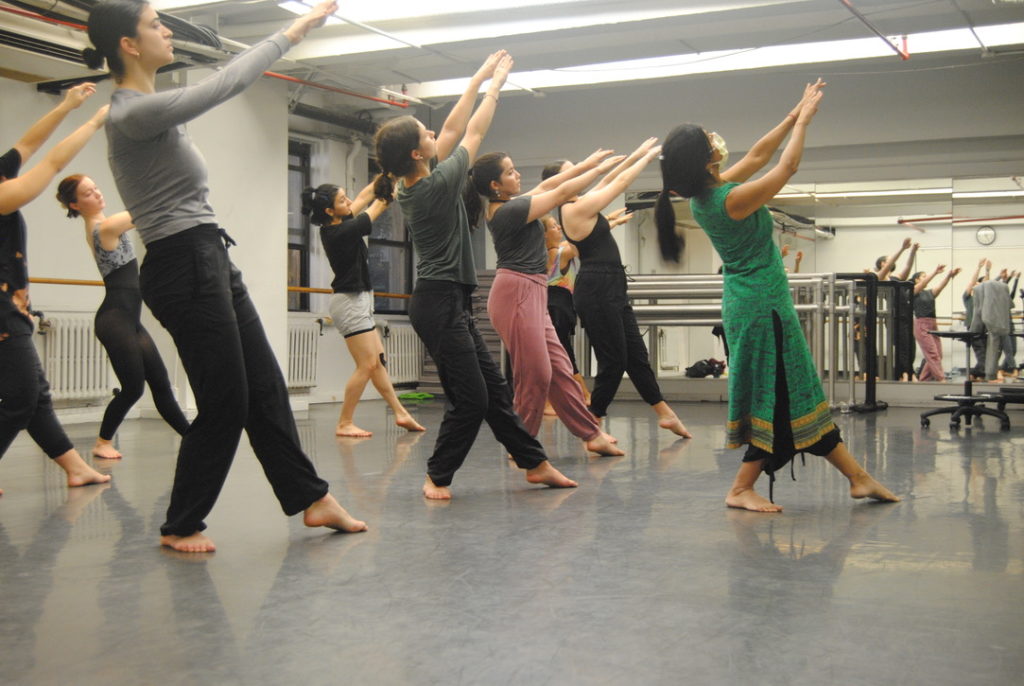
Preparing Well-Rounded Dancers
A through line that links these forms is groundedness—a quality McMiller believes not only helps dancers interact with gravity, softening their landings out of jumps and preserving energy in pliés, but enhances the longevity of their careers. The students who’ve taken Embodied Africanist Aesthetics have already noticed that they’re moving differently in their other dance classes. “How I use my chest and torso is really helping in modern,” says Colado. “But what I really got out of the class is confidence.”
McMiller agrees. “I’ve witnessed a sense of empowerment in the students, regardless of their ethnic background,” he says. “The students walk taller, and move with more confidence in themselves.” Marymount Manhattan certainly hopes this experience will make their graduates stand out in the job market. But more than that, that their dancers will simply be more well-rounded people. “My hope is that as we develop and grow this class, the dancers who come in will understand that all dance aesthetics are valuable, not just those that are Eurocentric,” says Goudy. “And that experiencing this technique will not only enhance your ability to get employment, but open your view of how diverse this world is and how diverse dance is.”
You can find more information about Marymount Manhattan College’s dance program here. Prospective students can click here to find out more about the admissions and audition processes.
